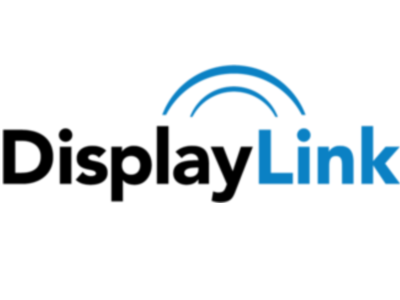DisplayLink Crams 4K Video Through USB 3.0
DisplayLink is getting ready for the rush of 4K displays.
For the uninitiated, DisplayLink develops a hardware/software solution that can send video through a USB port. The tech enables a number of peripherals provided by Diamond Multimedia, Targus, Asus, Lenovo and others to extend support for additional displays beyond the physical limits of a desktop or notebook. DisplayLink can handle up to six at one time along with keyboard and mouse support, audio and extra USB-based drives, depending on the device. For laptop owners, it's an awesome accessory.
Back during the Intel Developer Forum in San Francisco, DisplayLink demonstrated support for UltraHD displays over both USB and WiGig (802.11ad) connections. John Cummins, VP Sales and Marketing at DisplayLink, said that the latest DisplayLink 4K tech makes this possible, and will be completely backwards compatible with the current DisplayLink installed base.
"Many thought 4K over USB wouldn't be achievable, so we pushed the bar further, enabling Ultra HD 4K for both wired and wireless connections," he said. "The resolution increase is staggering when used in a business setting for data graphing, spreadsheets, and finance."
Of course, sending 4K video will likely be more ideal for USB 3.0 ports, especially when additional I/O data starts to clog up the USB pipeline like audio, mouse and keyboard input, and so on. Engadget, on hand at the demonstration, reports that the new 4K video offering also works on USB 2.0, although the dynamically compensating data compression at work may cause some frames to drop. Actually, the frames will likely become pixilated, which can even happen with HD video on a USB 3.0 port (been there, done it).
Our new step-sister site, LAPTOP, reports that DisplayLink is showcasing a number of prototypes during Intel's conference including a next-generation laptop dock, a wireless dock that can control two monitors over a Wireless AC network, and even solutions for Chromebooks and Android phones. The company is reportedly working on Android drivers for DisplayLink monitors now, but these will need to be preloaded on phones by the device makers rather than end-users.
The company introduced its latest fourth-generation DL-4000 family of USB monitor chips and customer products back in June during Computex. The company said this new family would enable a category of 'green' monitors capable of providing both power and data over a single USB cable. Other features include integrated video frame memory, pixel perfect text and graphics, HDCP 2.0 encryption compatibility, sub-frame latency and more.
DisplayLink said that availability of samples and production of its 4K tech will be announced at a later date.
Get Tom's Hardware's best news and in-depth reviews, straight to your inbox.

Kevin Parrish has over a decade of experience as a writer, editor, and product tester. His work focused on computer hardware, networking equipment, smartphones, tablets, gaming consoles, and other internet-connected devices. His work has appeared in Tom's Hardware, Tom's Guide, Maximum PC, Digital Trends, Android Authority, How-To Geek, Lifewire, and others.
-
KelvinTy If you have a good enough processor with a good enough encoder, you can do a lot with USB2.0. For those wondering, you can try watching 1080p+ streams, if the streamer has a good enough PC, they can have bit rate as little as 3000kbps and still have a very watchable quality. And since USB 2.0 is rated at 480Mbps, it has potential to do a lot more than it is doing now.Reply -
nukemaster Unfortunately, The biggest issue with USB 2.0 is that it has so much overhead that it is slower than Firewire 400 in raw bandwidth and would be closer to about 260-300megabit/sec(that is 33-38megabytes/sec) on most hardware.Reply
I mean it has NO issue watching lets say bluray at 1080p(compressed video), but the 480megabits/sec is pure marketing just like wireless network cards with collision avoidance taking about half the bandwidth. -
joaompp If they update their devices to support USB 3.1 then they shouldn't have an issue since it supports twice the speed as USB 3.0Reply -
jimmysmitty Reply11620266 said:If they update their devices to support USB 3.1 then they shouldn't have an issue since it supports twice the speed as USB 3.0
The issue is not so much the bandwidth but rather the protocols that were in place when USB was first developed are still in place for even USB 3.0.
First off is the encoding scheme (8b/10b) which means a automatic 20% drop in data rates. It was the same as PCIe 2.0/2.1 and 3.0 changed to 128b/130b to drop the loss greatly.
There are others and while they are implementing others that help USB perform better, its original idea did not allow for the massive amount of data to be transferred. This could work well as a single use of USB but when you add more devices using USB, it will slow it down considerable.
This is what eSATA and Thunderbolt are being designed for. They are designed as single link systems that have their own channel per port while USB is a single controller working for multiple ports.
Of course USB is much cheaper as it has been around long enough to saturate the market and just switching is hard unless you take the approach Seagate has with their GoFLex style eHDDs which makes it easy to move to the next or better interface. -
ddpruitt They say they do 4k but they don't mention bitrate or frame rate. Makes me wonder how good the quality is. Not that I don't mind using a single cable for everything but can I play a 4k 3D blu ray over display link? HDMI can't do this yet and that's what it was designed for.Reply -
bin1127 Can it handle the 4k video plus sound or just video? It sounds impressive since I only use usb for external storage and what not. didn't think it can handle something requiring that much bandwidth.Reply
